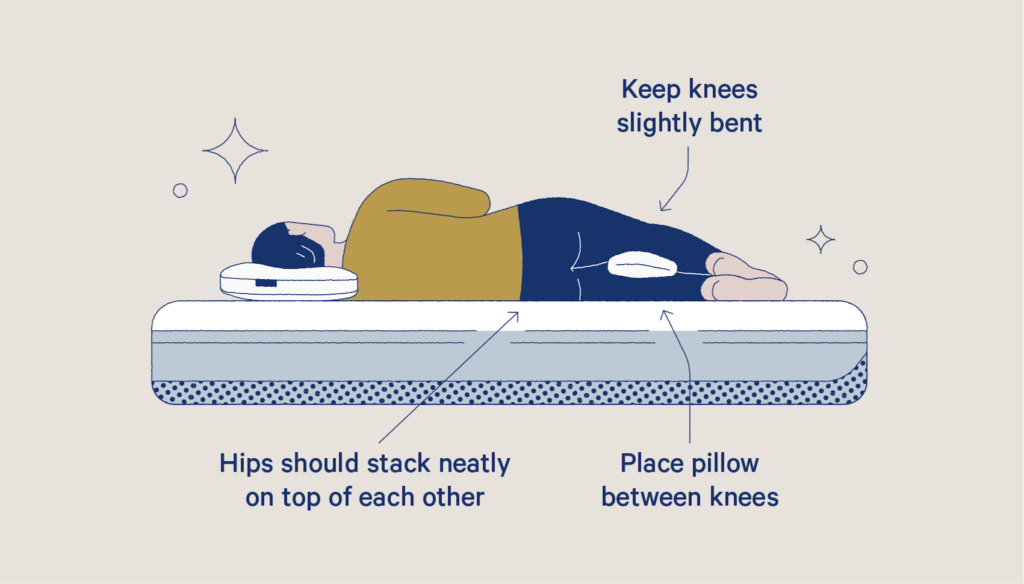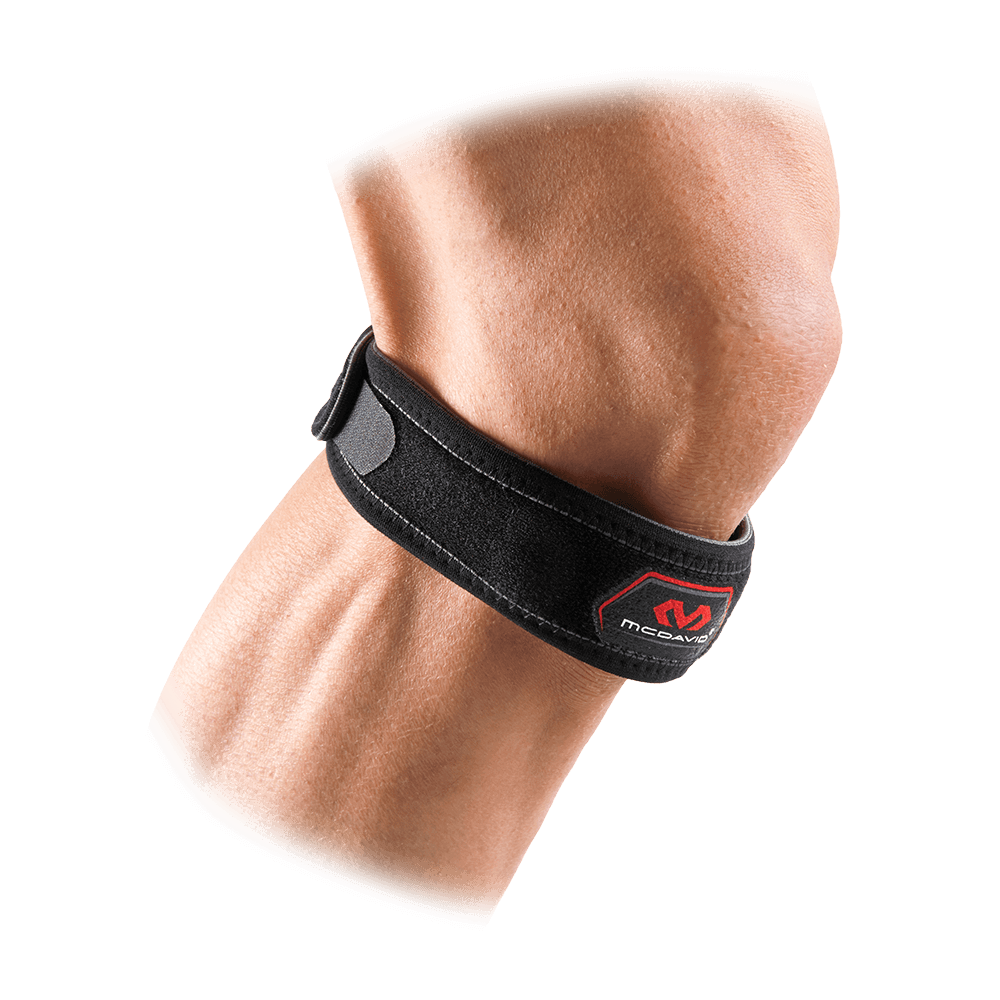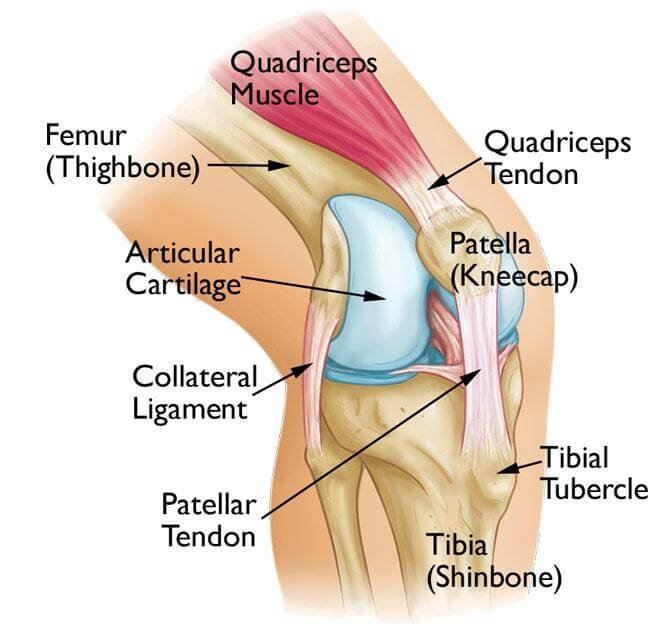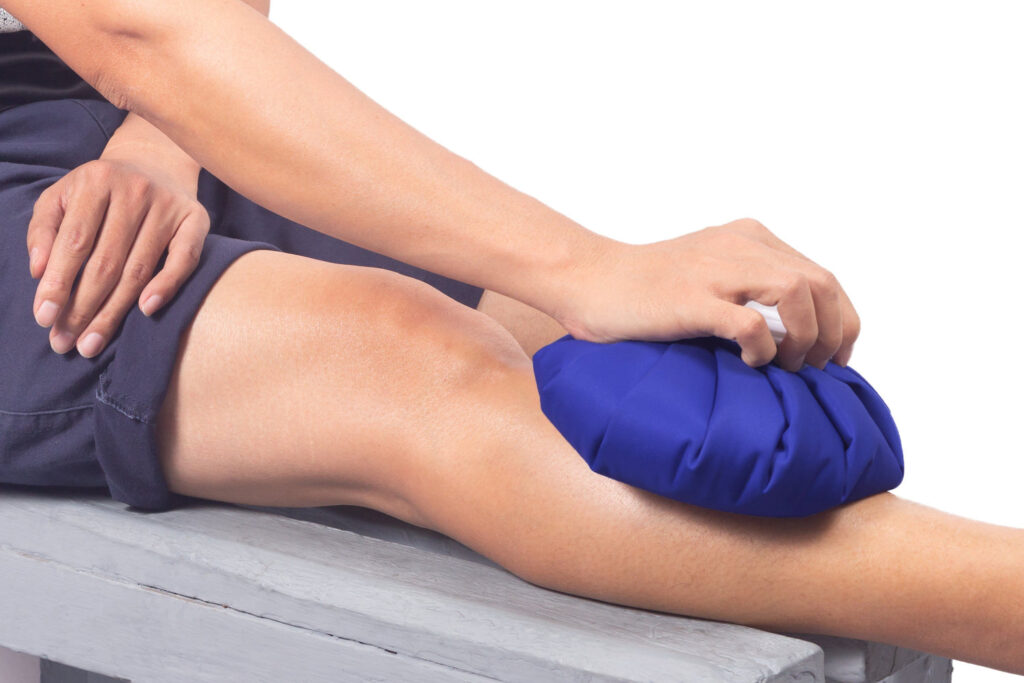The human knee, with its intricate network of ligaments, tendons, and the ever-elusive patella, is a remarkable feat of biomechanical engineering. It supports us in everything from a leisurely stroll in the park to intense athletic performances, allowing us to bend, flex, and pivot with precision and grace. However, the knees, like any well-oiled machine, are not impervious to wear and tear. Whether you’re a dedicated athlete pushing your physical limits or someone who enjoys the occasional jog, knee discomfort and injuries can be an unwelcome companion on your journey to an active lifestyle.

Two common solutions that individuals turn to for knee support and relief are the patella band and the knee sleeve. Both these accessories are designed to provide extra stability, alleviate discomfort, and aid in the recovery process. However, choosing between a patella band and a knee sleeve can be a perplexing decision, as each serves a distinct purpose and offers unique benefits.
In this comprehensive article, we will delve deep into the world of knee support accessories, exploring the fundamental differences between patella bands and knee sleeves, their various types, and most importantly, which one suits your needs the best. Whether you’re an athlete looking for enhanced performance or someone struggling with chronic knee pain, this guide aims to provide you with the knowledge you need to make an informed decision and ultimately take a step closer to achieving a more pain-free, active lifestyle.
So, if you’ve ever wondered about the distinction between a patella band and a knee sleeve, you’re in the right place. Let’s embark on a journey through the world of knee support, uncovering the secrets behind these two essential tools and helping you find the perfect solution for your knees.
Differences between Patella Bands and Knee Sleeves:
- Primary Function:
- Patella Band: A patella band, also known as a patella strap or knee strap, is primarily designed to provide targeted support to the patella, which is the kneecap. It’s ideal for individuals experiencing patellar tendonitis, runner’s knee, or general patellar pain. The band wraps around the knee, just below the kneecap, and exerts pressure to alleviate stress on the patellar tendon.
- Knee Sleeve: A knee sleeve, on the other hand, is a more versatile accessory designed to provide overall support to the entire knee joint. Knee sleeves are typically made from elastic materials and offer compression, warmth, and stability to the entire knee area. They are beneficial for a wide range of knee issues, including arthritis, ligament injuries, and general joint instability.
- Design and Construction:
- Patella Band: Patella bands are typically narrow straps made from materials like neoprene or elastic fabric. They feature an adjustable closure system to allow for a customizable fit. The design of the patella band is minimalist, focusing on targeted compression around the patellar tendon.
- Knee Sleeve: Knee sleeves are usually wider and cover a larger area of the knee. They are made from thicker, stretchy materials and often come in different lengths, with some extending from the mid-thigh to the calf. Knee sleeves provide uniform compression and warmth to the entire knee joint, making them suitable for various knee conditions.
- Intended Use:
- Patella Band: Patella bands are primarily intended for use during physical activities, such as running, jumping, or sports, to provide immediate relief and support for patellar issues. They are often used as a preventive measure to reduce the risk of injuries during high-impact activities.
- Knee Sleeve: Knee sleeves are designed for a broader range of applications. They can be worn during physical activities to enhance performance and reduce the risk of injury, but they are also frequently used for post-injury or post-surgery rehabilitation. Additionally, knee sleeves can be worn for daily activities to alleviate chronic knee pain and discomfort.
- Level of Support:
- Patella Band: Patella bands offer a highly targeted level of support, focusing solely on the patellar region. They are effective at reducing stress on the patellar tendon but may not provide comprehensive knee joint stability.
- Knee Sleeve: Knee sleeves offer more generalized support and are effective at providing stability to the entire knee joint. They can help with a wider range of conditions, including osteoarthritis, ligament injuries, and general joint pain.
- Sizing and Fit:
- Patella Band: Patella bands are typically one-size-fits-all or come in adjustable sizes. They are designed to be snugly wrapped just below the kneecap, ensuring a secure fit.
- Knee Sleeve: Knee sleeves come in various sizes and lengths, and a proper fit is crucial to ensure they provide the right level of compression and support. It’s important to measure your knee’s circumference and follow the manufacturer’s sizing guidelines when selecting a knee sleeve.
In summary, the choice between a patella band and a knee sleeve depends on your specific knee-related needs. Patella bands are specialized for patellar support, while knee sleeves offer more comprehensive knee joint support and are suitable for a wider range of conditions. Understanding the differences between these two accessories is essential in making an informed decision to improve your knee health and overall well-being.
Types of Patella Bands and Knee Sleeves:
Patella Bands:
- Basic Patella Band: This is the most common type of patella band. It features a simple strap that wraps around the knee just below the kneecap and typically has an adjustable closure system. Basic patella bands provide targeted support for patellar tendon issues.
- Gel-Padded Patella Band: Some patella bands come with gel padding on the inner side that rests against the patellar tendon. The gel padding provides additional cushioning and helps distribute pressure more evenly, making them suitable for individuals with extreme patellar pain.
- Dual-Strap Patella Band: These bands feature two straps, one above and one below the kneecap. The dual-strap design offers enhanced stability and is often preferred by athletes engaging in high-impact sports.
- Neoprene Patella Band: Neoprene patella bands are made from a durable and moisture-wicking material that provides both support and thermal insulation. They are suitable for individuals who need additional warmth and compression for their patellar issues.
Knee Sleeves:
- Neoprene Knee Sleeve: Neoprene knee sleeves are the most common type. They are made from a thick, synthetic rubber material that provides strong compression, warmth, and support to the entire knee joint. Neoprene knee sleeves are popular among weightlifters and powerlifters.
- Elastic Knee Sleeve: Elastic knee sleeves are typically thinner and more breathable than neoprene sleeves. They offer moderate compression and are often used by individuals engaging in activities like running or cycling.
- Open-Patella Knee Sleeve: This type of knee sleeve has a hole or cutout in the front, allowing the patella to move freely. Open-patella knee sleeves provide support to the surrounding knee area while reducing direct pressure on the kneecap. They are suitable for individuals with mild patellar discomfort.
- Closed-Patella Knee Sleeve: Closed-patella knee sleeves cover the entire knee, providing uniform compression and support to the patella and surrounding structures. They are ideal for overall knee joint stability and are often used in activities involving lateral movements, like basketball or soccer.
- Copper-Infused Knee Sleeve: Some knee sleeves are infused with copper, which is believed to have anti-inflammatory properties. These sleeves are marketed to provide additional pain relief and support for individuals with arthritis or chronic knee pain.
- Compression Knee Sleeve: Compression knee sleeves are designed to provide graduated compression to enhance blood flow and reduce muscle fatigue. While they may not offer the same level of joint stability as other sleeves, they are favored by endurance athletes.
- Recovery Knee Sleeve: These knee sleeves are designed with a focus on post-exercise or post-injury recovery. They often feature special materials or designs to reduce swelling, inflammation, and muscle soreness.
Choosing the right type of patella band or knee sleeve depends on your specific needs, activity level, and the nature of your knee issues. It’s essential to consult with a healthcare professional or a sports medicine specialist to determine the most suitable option for your unique circumstances.
What You Need to Consider When Choosing Between a Patella Band and a Knee Sleeve:
- Type and Severity of Knee Issue: Your specific knee problem plays a crucial role in determining whether a patella band or knee sleeve is more appropriate. If you’re experiencing patellar tendonitis or localized patellar pain, a patella band may be sufficient. However, for more extensive knee issues, such as arthritis, ligament injuries, or overall joint instability, a knee sleeve may be a better choice.
- Activity Level: Consider your activity level and the types of physical activities you engage in. If you’re an athlete participating in high-impact sports, a knee sleeve may provide the comprehensive support and stability needed. On the other hand, if you’re looking for targeted support during specific activities, a patella band can be effective.
- Fit and Sizing: Proper sizing is essential to ensure that your patella band or knee sleeve provides the right level of support and comfort. Carefully measure your knee’s circumference and consult the manufacturer’s sizing guidelines to select the correct size.
- Comfort and Breathability: Consider your personal comfort preferences. Neoprene knee sleeves offer robust support but may feel bulkier and less breathable. If comfort is a priority, you might opt for an elastic knee sleeve, which is thinner and more breathable.
- Budget: Patella bands are generally more cost-effective than knee sleeves. Evaluate your budget and the value you place on knee support when making your choice.
- Rehabilitation vs. Prevention: Determine whether you need knee support for rehabilitation purposes or injury prevention. Knee sleeves are suitable for both rehabilitation and prevention, while patella bands are often used for prevention and immediate relief during physical activities.
- Consultation with a Healthcare Professional: If you’re uncertain about your knee condition or the best option for your needs, it’s advisable to consult a healthcare professional or a sports medicine specialist. They can provide personalized recommendations based on your medical history and specific requirements.
- Try Before You Buy: If possible, try on different patella bands and knee sleeves to assess their comfort, fit, and overall feel. This hands-on approach can help you make an informed decision.
- Reviews and Recommendations: Research customer reviews and seek recommendations from individuals who have similar knee issues or activity levels. Real-world experiences can provide valuable insights into the effectiveness of specific brands and models.
- Maintenance and Care: Be aware of the maintenance and care required for your chosen accessory. Most patella bands and knee sleeves can be hand-washed or machine-washed, but it’s essential to follow the manufacturer’s care instructions to prolong their lifespan.
In conclusion, the choice between a patella band and a knee sleeve is not one-size-fits-all. It depends on your unique circumstances, including the nature of your knee issues, activity level, and personal preferences. By considering these factors and seeking expert advice when needed, you can make an informed decision that will help you achieve better knee health and an active lifestyle.




